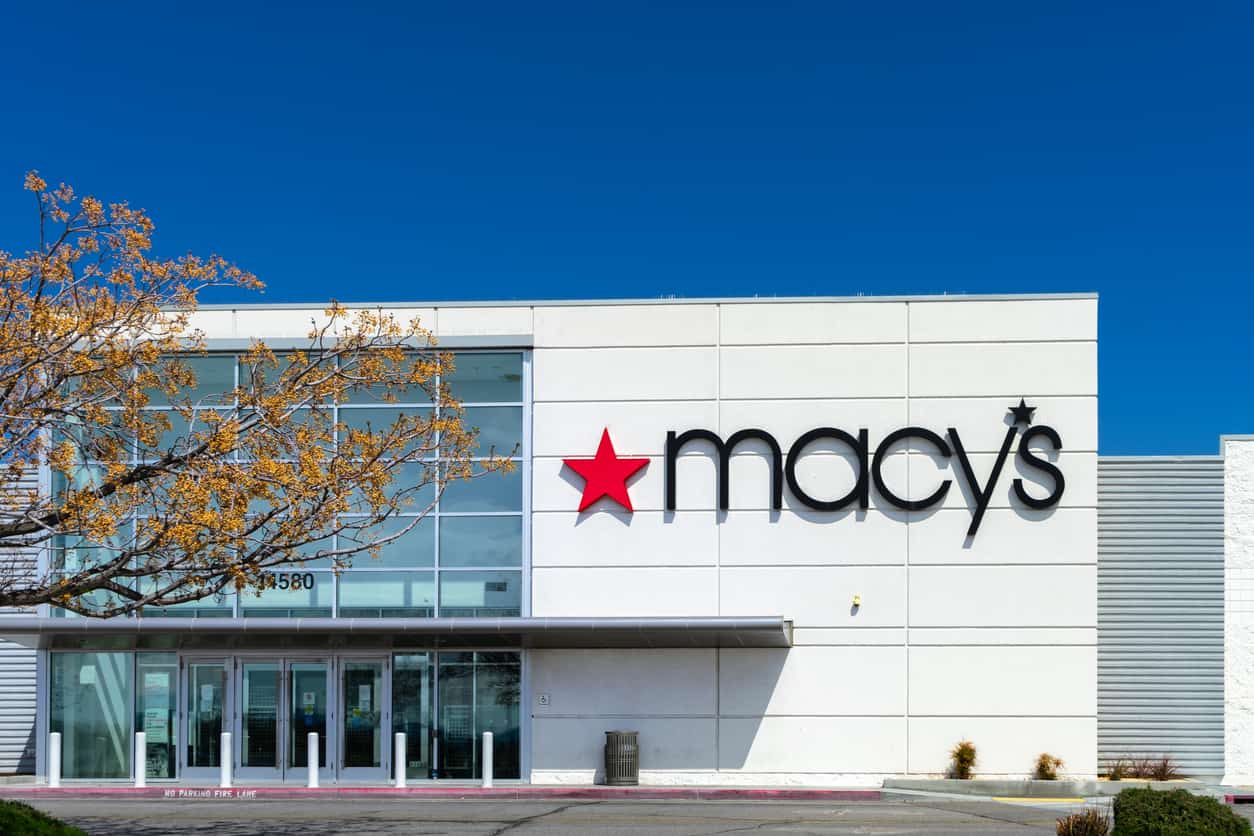
iStock.com/sanfel
How Will Closing 150 Macy’s Locations Affect Retail?
In the ever-evolving landscape of retail, the recent announcement of Macy’s plan to shutter approximately 150 stores has sent ripples of anticipation among its competitors. While the closures are yet to materialize, this move is expected to not only redefine the competitive dynamics within the retail sector but also reshape shopping patterns for consumers across the nation.
The decision to downsize stems from Macy’s struggle with lackluster sales and the need to revamp its business model. With approximately 500 stores in its portfolio, closing over a quarter of them could free up as much as $2 billion in market share. While Macy’s plans to focus on strengthening its remaining stores, competitors are gearing up to seize the opportunity.
However, the implications of Macy’s closures extend beyond just a redistribution of market share. The move reflects broader trends in the retail landscape, where traditional department stores are facing stiff competition from online retailers and evolving consumer preferences. Retailers must adapt to these changing dynamics by embracing innovation and reimagining their business models to stay relevant in an increasingly digital world.
With Macy’s stepping back, Target’s CEO Brian Cornell and Kohl’s CEO Tom Kingsbury have both expressed optimism about leveraging Macy’s downsizing to boost their own sales. Cornell told CNBC in March that Target has “gotten a leg up from other closures before. For example, he said, some of its stores are in former Toys R Us locations.” Target also said last month that it “plans to build more than 300 new stores over the next decade. It already has more than 1,950 stores across the U.S.”
Moreover, Kohl’s, with its strategic store locations in strip centers, sees Macy’s closures as a chance for growth. However, both Macy’s and Kohl’s face challenges in attracting younger consumers amidst shifting consumer preferences.
T.J.Maxx is also poised to benefit from the closures due to its similar merchandise offerings and store locations. This ripple effect extends to other retailers like Ross and Nordstrom, which are likely to gain from Macy’s shoppers transitioning to their stores. According to credit card data analysis by Earnest Analytics, “Those companies already count many of Macy’s shoppers as their customers.”
Off-price chains like T.J.Maxx, with their convenient locations and competitive pricing, have emerged as formidable rivals to department stores. Their ability to attract affluent customers and their extensive store network position them favorably in the retail landscape.
The closures not only impact Macy’s but also have implications for shopping malls, as these stores often serve as anchor tenants. This underscores the need for malls to diversify their tenant mix and explore alternative uses for vacant retail space to remain viable in the long term.
In response to changing market dynamics, Macy’s and Nordstrom have been exploring private ownership. Macy’s has tentatively agreed to disclose financial records for a potential $6 billion takeover bid, while reports indicate Nordstrom’s founding family is mulling over taking the company private again. These moves come during a critical period for the retail sector, grappling with changing consumer preferences and the ever-growing influence of online shopping.
Industry veteran Mickey Drexler, known for his insights into consumer behavior, paints a somber picture of the challenges facing department stores today. After visiting a Macy’s store recently, he described an atmosphere tinged with uncertainty, highlighting the unpredictable nature of the retail business. “It’s a little scary, a little stunning,” he said. “This business is never one that’s a sure bet.”
Drexler emphasized the necessity for retailers to establish a distinct brand identity in an era of heightened consumer expectations. “If you look at the companies that are very successful, they stand for something,” he remarked. He also criticized the prevalent practice of constant discounting, noting its negative impact on both businesses and consumers.
Delving into inventory management, Drexler stressed the importance of maintaining optimal stock levels to meet consumer demand effectively. Despite the challenges traditional retailers currently experience, he remains cautiously optimistic about the industry’s future, recognizing the resilience required to navigate these turbulent times.
To stay afloat, these retailers must revamp their value propositions, offering unique, fairly priced, and exclusive items that can’t be easily found online. Despite challenges, their physical presence remains a strategic advantage, with mall traffic nearing pre-pandemic levels, according to location intelligence firm Placer.ai’s report “The Comeback of the Mall in 2024.” This presents an opportunity for department stores to reassert their relevance as hubs for cross-category shopping.
However, consumers are often bypassing department stores due to perceived staleness in their brand offerings. To counter this, retailers are reimagining their product strategies, blending well-known national brands with emerging labels and in-house lines. Macy’s and Nordstrom, for instance, are refreshing their offerings by introducing new private labels and online marketplaces.
Kohl’s has capitalized on a partnership with Sephora to attract new customers and plans to introduce new brands this year like Quiksilver and Roxy. Nordstrom, on the other hand, excels in merchandising new products in innovative ways, such as its recent collaboration with Liberty London.
As Macy’s and Nordstrom face potential transitions, the retail industry as a whole awaits the outcome, knowing that the landscape will continue to evolve driven by innovation and consumer preferences.
Discussion Questions
How can traditional department stores like Macy’s and Nordstrom adapt to compete with online retailers and off-price chains while meeting modern consumer demands?
With Macy’s closing stores, how should shopping malls evolve to remain relevant without anchor tenants?
Balancing innovation and profitability, how can department stores like Macy’s and Nordstrom maintain a distinct brand identity and offer unique, fairly priced items amidst stiff competition?
